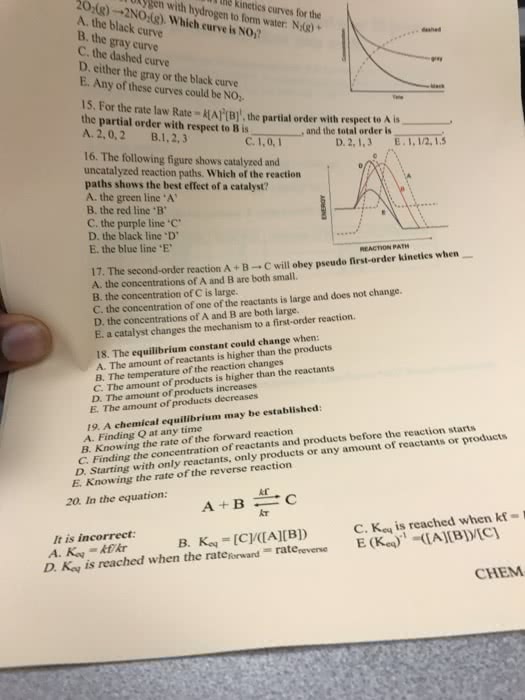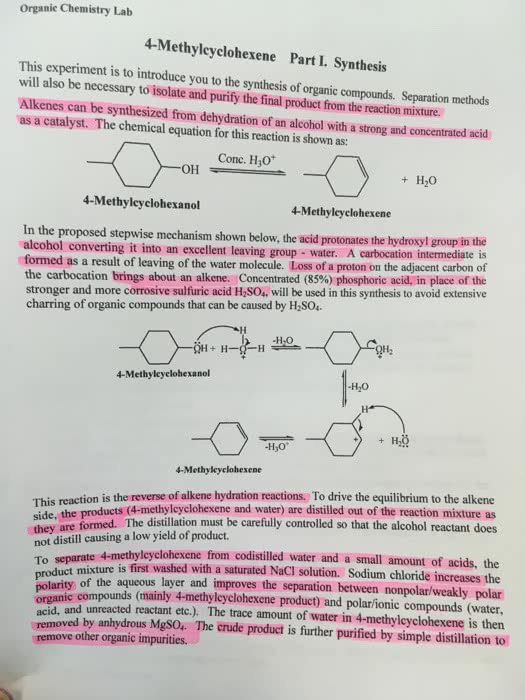CHEM 343 Lecture Notes - Intramolecular Reaction, Carboxypeptidase A, Equilibrium Constant
94 views3 pages
Document Summary
Catalyst substance that increases the rate of a chemical reaction without itself being consumed or changed in the overall reaction. A catalyst does not change the equilibrium constant, it does not change the amount of product formed during the reaction. It only changes the rate at which the product is formed. A catalyst can decrease g in one of three ways. The catalyzed and uncatalyzed reactions can follow can similar mechanism, with the catalyst providing a way to make the reactant less stable. The catalyzed and uncatalyzed reactions can follow a similar mechanism, with the catalyst providing a way to make the transition state more stable. A catalyst can completely change the mechanism of the reaction, providing an alternative pathway with a smaller g than that of the uncatalyzed reaction. Acid catalyst increases the rate of a reaction by donating a proton to a reactant. The acid increases the rates of both slow steps of the reaction.
Get access
Grade+20% off
$8 USD/m$10 USD/m
Billed $96 USD annually

Homework Help
Study Guides
Textbook Solutions
Class Notes
Textbook Notes
Booster Class
40 Verified Answers
Class+
$8 USD/m
Billed $96 USD annually

Homework Help
Study Guides
Textbook Solutions
Class Notes
Textbook Notes
Booster Class
30 Verified Answers
Related textbook solutions
Chemistry: Structure and Properties
2 Edition,
Tro
ISBN: 9780134293936
Basic Chemistry
5 Edition,
Timberlake
ISBN: 9780134138046
Principles of Chemistry Molecular Approach
4th Edition,
Tro
ISBN: 9780134112831
Principles of Chemistry Molecular Approach
3rd Edition, 2014
Tro
ISBN: 9780321971944
Chemistry: Structure and Properties
2nd Edition,
Tro
ISBN: 9780134293936
Chemistry: A Molecular Approach
3rd Edition,
Tro
ISBN: 9780321809247
Chemistry: A Molecular Approach
5th Edition,
Tro
ISBN: 9780134874371
Principles of Chemistry: A Molecular Approach
4th Edition,
Tro
ISBN: 9780134895741
Chemistry: The Central Science
14th Edition, 2017
Brown
ISBN: 9780134414232

